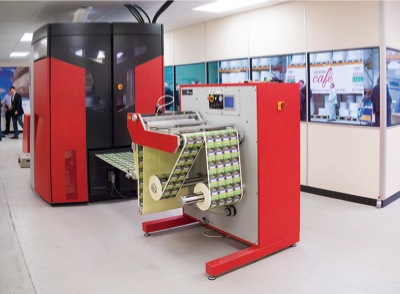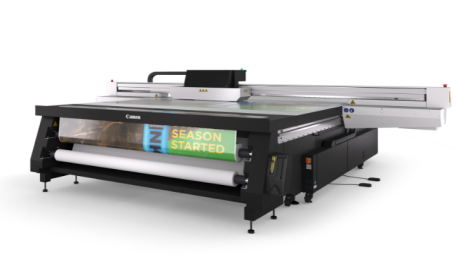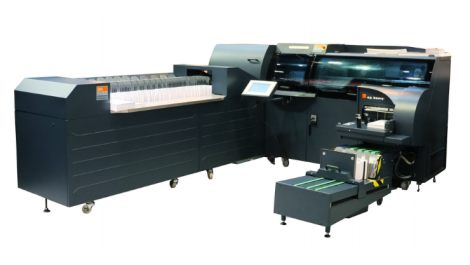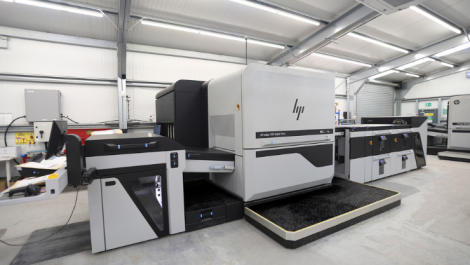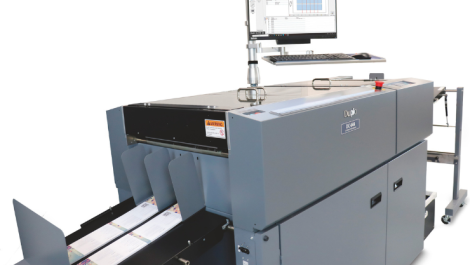The latest Xeikon 3500 boosted capacity by 60% when it was installed late in 2012.
West Midlands based CS Labels is Europe’s largest user of Xeikon label presses. In June it hosted a Xeikon Café customer event to show off its expanded capabilities. Simon Eccles went along.
When CS Labels installed its third Xeikon reel fed digital label press into its West Midlands factory late last year, it became the largest user of this press type in Europe. It has become something of a showpiece user for the Belgian press manufacturer, which marked this in June by holding one of its roving Xeikon Café customer events at CS Labels, the first in the UK for two years.
Since 2008 the company has invested more than £2 million in a series of five of these digital label presses, though the first two were traded in for later models.
The latest press to arrive is a 3500, with 516 mm web width, which joined a pair of 330 mm 3300 presses, all with fifth unit white toner facilities. At the same time the compan moved into an adjacent factory unit on the Willenhall Trading Estate in Midacre near Birmingham, close to the M6 motorway. The new press and the move totalled a £1.5 million investment that was aided by a government regional development grant.
The 3500 adds 50% more capacity to the company, whose production is mainly digital, and based on the Xeikons for most work, with a couple of Roland VersaCamm inkjets for wide format work. The company’s original flexographic label presses have been retired, although a couple of screen presses have been retained.
‘The new 3500 installed last year gives 60% extra capacity for us to fill,’ said managing director Simon Smith. ‘We tend to run paper labels on the 3500 and polypropylene on one of the 330 mm presses, and miscellaneous work on the other press. The presses are much more reliable and consistent if you run the same material all the time.’
The company extends this versatility with amix of Xeikon and third party hardware and software. It runs four near-line label finishers for die cutting, stripping and re-reeling.
 Pre-registered visitors to the Xeikon Café event were given presentation boxes of Staffordshire Brewery beer
Pre-registered visitors to the Xeikon Café event were given presentation boxes of Staffordshire Brewery beer
It also uses Xeikon’s recently introduced VariLane, a software plugin for the X-800 digital front end that allows multiple ‘lanes’ of labels to be printed side by side – the clever part is that the lanes can be different widths for different label sizes, while side-by-side job lengths can be different as the software sorts this out: for instance, it may run three short jobs in sequence at the same time as one long run.
Also new is the use of Xeikon Color Control, a cloud-based press profiling and consistency checking service run by Xeikon. CS Labels prints test charts which are scanned and uploaded to the service, which returns a profile for that particular press and media combination.
Every few days a smaller test chart is printed and uploaded to the service, which returns a report that measures consistency and notifies whether it is within tolerance. ColorLogic’s metallic colour management software is used to generate a range of shades that are printed over metallised label materials.
TimeHarvest MIS software is used, and in May the company installed OneVision Asura PDF preflighting and automatic fixing software – previously incoming files were checked visually and about 10% needed correction of some sort.
The label work coming in is a mixture of retail, cosmetic and beverage work, typically for relatively small producers who do not need the millions of labels that would justify flexo presses. For instance, at the Xeikon Café event the company was pre-registering visitors and then giving them a presentation pack of three bottles of beer made by its customer Staffordshire Brewery. The self-adhesive labels were printed in black and yellow to give a gold effect over metallised foil paper, and each bottle was printed with the name ofthe registered visitor.
It is a far cry from 2004 when Mr Smith joined what was then the family screen printing business. Previously he had been a bank manager and admitted he knew almost nothing about printing. ‘I said to our people that I’d heard about four colour process and could we do that on our four unit screen presses? They said no, we’re spot printers.’
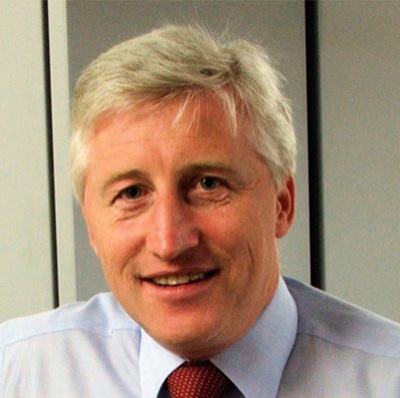 Simon Smith was a bank manager before joining the company in 2004
Simon Smith was a bank manager before joining the company in 2004
He said he soon came to realise that the original business model would not work for long. ‘I went to our biggest screen print customer, that we printed cartoon character jobs for, and he said that in two or three years time we’d be losing the business because it would all go to China. I thought I might have bitten off more than I could chew.’
Refocusing the business onto flexo label printing started to pay off, and in 2008 the company ordered its first digital label press, a Xeikon 330. ‘I borrowed 100% of the cost,’ said Mr Smith. ‘Then I invited my father-in-law over, who had 30 years’ experience in the print business. He said ‘that’ll never work!’ We printed just one digital job in the first week, so I thought he might be right! I also got a call from a customer who’d said he was sitting on the fence about the new press, as he’d heard digital colour was variable!”
Fortunately, other customers were convinced and the digital label business took off, leading to a second press order, then replacements for the first two 330s with current 3300 presses. ‘We’ve had great support from Xeikon, from the regional financing, and from our colleagues,’ Mr Smith said. ‘But my bank experience meant I understand how finance works. We took a five year loan for the digital press and paid it off a year early.
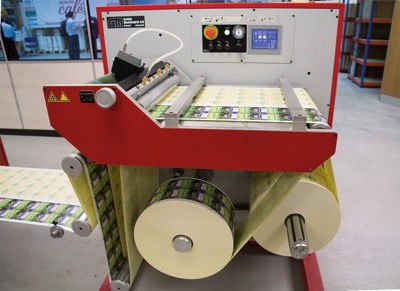 VariLane software on the front end sets up multiple ‘lanes’ of labels that are cut with positionable slitter wheels at the end of the press and then re-reeled separately.
VariLane software on the front end sets up multiple ‘lanes’ of labels that are cut with positionable slitter wheels at the end of the press and then re-reeled separately.
‘The real benefit of digital is not the costs, it’s that we’ve been able to change the dialogue with our customers into what we can do, rather than what we charge. We do not sell on price and we don’t want to be the cheapest digital house in the country. We sell on versatility. We were one of the first Xeikon houses in the UK to offer peel-and-reveal label printing, for instance.
‘The opportunities that digital presents are enormous. It’s only just beginning. We’re at the start of a digital revolution over the next five to ten years. I invited my father-in-law back to see the business now. “Hats off, you’ve done it,” he said.’
